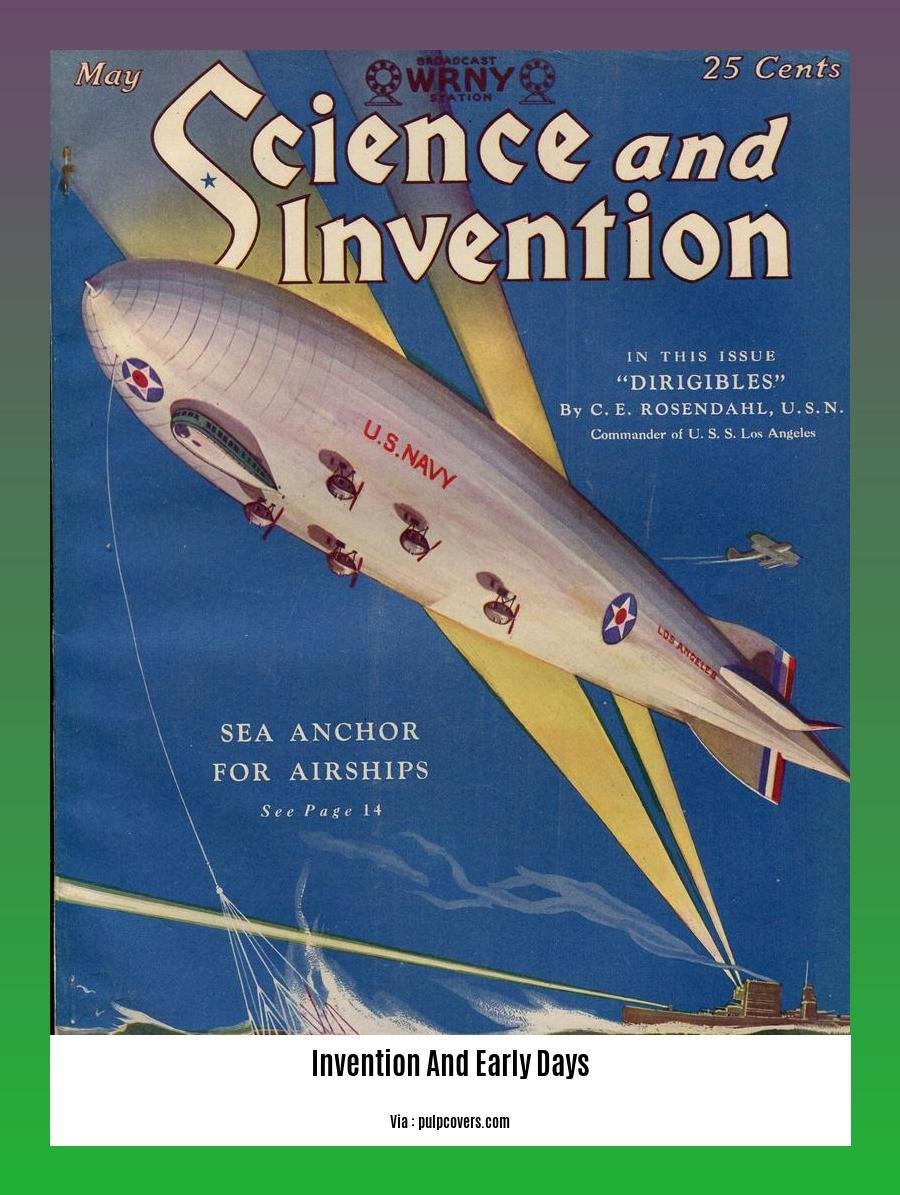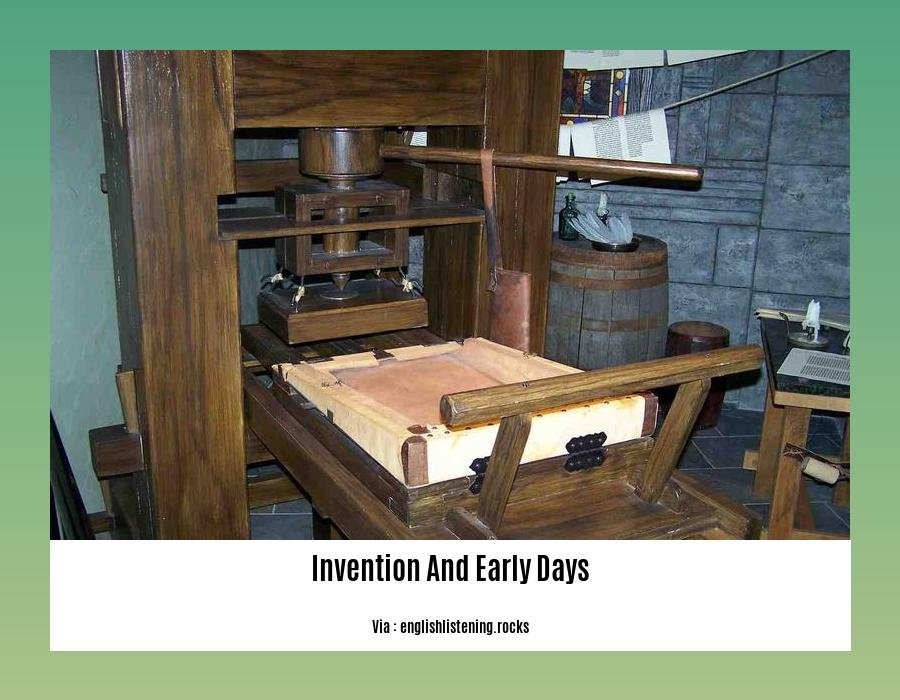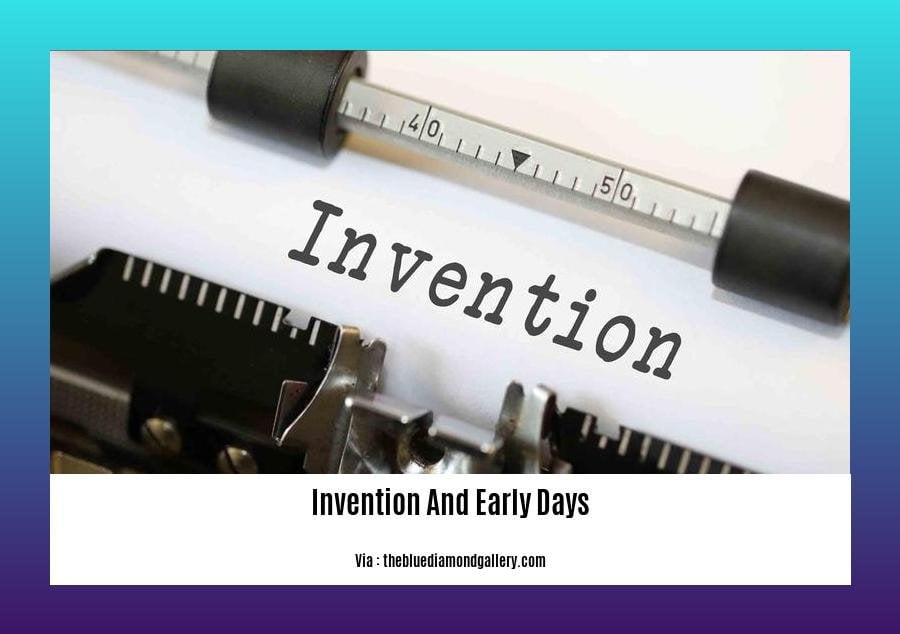Embark on an extraordinary journey through the annals of innovation in [The Invention and Early Days: Unveiling the Secrets Behind Game-Changing Innovations]. Delve into the captivating narratives of groundbreaking inventions, tracing their origins, witnessing their evolution, and exploring the profound impact they have had on our world.
Key Takeaways:
- Technological breakthroughs are chronologically documented, showcasing human ingenuity.
- Innovations from the Neolithic period include stone tools, copper, and arsenic bronze.
- The agricultural era spanned from the Last Glacial Period to the Industrial Revolution.
- The 20th century witnessed significant engineering achievements, demonstrating technological progress.
Invention and early days:

Our world is a symphony of innovations, each with a captivating backstory. Join me as we delve into the invention and early days of groundbreaking technologies that have shaped our present.
The Genesis of Ingenuity
The Agricultural Revolution, a pivotal moment in human history, marked the transition from nomadic hunting to settled farming. This era witnessed the birth of stone tools, copper, and arsenic bronze, laying the foundation for technological advancements to come.
The Agricultural Era Timeline:
| Period | Innovations | Interesting Fact |
|---|---|---|
| Neolithic | Stone tools, copper, arsenic bronze | Stone tools have been discovered dating back over 3.3 million years! |
| Bronze Age | Bronze tools, weapons, and armor | Bronze Age societies emerged independently in multiple regions around the world. |
| Iron Age | Iron tools, weapons, and armor | Iron replaced bronze in many cultures due to its increased strength and durability. |
The Seeds of Invention
In the realm of invention and early days, the seeds of great ideas are often sown in the fertile soil of necessity. The search for solutions to everyday problems, a thirst for knowledge, and a touch of inspiration have been the catalysts for countless breakthroughs.
Notable Examples:
- The Wheel: Invented around 3500 BC, the wheel revolutionized transportation and warfare.
- The Printing Press: Developed by Johannes Gutenberg in the 15th century, it democratized knowledge and fueled the Renaissance.
- The Steam Engine: Invented by Thomas Savery in 1698, it paved the way for the Industrial Revolution.
The Path to Progress
The journey from invention to widespread adoption is not always smooth. Many groundbreaking ideas faced skepticism, resistance, and even hostility. Yet, the persistence of innovators, the relentless pursuit of improvement, and the embrace of new possibilities ultimately brought these technologies to life.
Overcoming Obstacles:
- Skepticism: In the early days, skeptics often dismissed new inventions as impractical or ineffective.
- Resistance: Established interests and traditional mindsets could hinder the acceptance of new technologies.
- Financial Barriers: Securing funding for research and development can be a significant challenge for innovators.
Embracing the Future
As we stand at the cusp of the 21st century, the pace of invention and early days is accelerating. The digital revolution, the advent of artificial intelligence, and the emergence of new materials are transforming our lives at an unprecedented rate.
The Future of Innovation:
- Collaboration: The interconnected world fosters collaboration among researchers, entrepreneurs, and investors.
- Technological Convergence: The merging of different technologies creates new possibilities and challenges.
- The Role of Society: Society’s embrace and ethical considerations shape the direction of technological progress.
Conclusion
The invention and early days of groundbreaking technologies are a testament to human ingenuity and the transformative power of innovation. By exploring the stories behind these innovations, we gain a deeper appreciation for the challenges, triumphs, and profound impact they have had on our world. Let us continue to embrace the spirit of invention and foster an environment where new ideas can flourish, shaping a future filled with boundless possibilities.
Delve into the captivating history of television and uncover the evolution of this groundbreaking invention.
Explore the development of color TV and witness the vibrant transformation that reshaped the viewing experience.
Harness the power of streaming services, which have revolutionized the way we access and consume entertainment content.
Prototyping and Testing: Refining the Concept into Reality

Prototyping is the stage when abstract ideas take a physical form, transforming concepts into tangible representations. Testing allows us to poke, prod, and scrutinize these tangible creations, uncovering their strengths, flaws, and areas for improvement.
Prototyping and testing are the unsung heroes of innovation, the meticulous process that refines concepts, identifies potential pitfalls, and guides informed design decisions. It’s the bridge between imagination and realization, where ideas are shaped into products that serve our needs.
Prototyping: From Concept to Creation
Prototypes come in all shapes and sizes, from simple, inexpensive models known as low-fidelity prototypes to realistic, detailed creations known as high-fidelity prototypes. The key lies in striking a balance between accuracy and resources.
Testing: Putting Concepts to the Test
Testing involves subjecting prototypes to a gauntlet of assessments, evaluating their functionality, usability, and a myriad of other aspects. It’s the rigorous examination that unveils the prototype’s true nature, exposing its weaknesses and highlighting its potential.
The Benefits of Prototyping and Testing
The benefits of prototyping and testing are undeniable:
- Reduces risk by identifying potential issues before mass production.
- Enhances the likelihood of product success by producing creations that align with user needs.
- Helps in refining concepts, leading to more efficient and effective designs.
Key Takeaways
- Prototyping and testing are crucial steps in the innovation cycle.
- Prototypes help refine concepts and identify potential issues.
- Testing evaluates a prototype’s functionality, usability, and other aspects.
- Prototypes can range from low-fidelity to high-fidelity.
- Effective prototyping and testing can significantly reduce the risk of failure and increase the likelihood of product success.
Relevant Sources:
Challenges and setbacks: Navigating the path to success
When it comes to innovation, setbacks and challenges are inevitable. Navigating these obstacles is crucial for success. It’s like a rollercoaster ride with plenty of ups and downs, but it’s the experience that makes the journey worthwhile.
Entrepreneurs often face failures along the way. But instead of being discouraged, they use these setbacks as learning opportunities. They learn from their mistakes, adapt their strategies, and keep moving forward.
Embracing resilience and perseverance
Just like a vine that grows stronger after being pruned, entrepreneurs who embrace challenges become more resilient. They stay persistent, never giving up on their dreams. They believe in their vision and work tirelessly to bring it to life.
A positive mindset is like a beacon of hope in the face of adversity. It helps you stay optimistic, even when things seem bleak. Remember, every challenge is an opportunity to learn and grow. Focus on the lessons you can take away from each experience.
Communication and stakeholder engagement
Effective communication is like a bridge that connects you with your team, investors, and customers. Keep your stakeholders informed about your progress and challenges. Open and honest communication builds trust and support.
Engage with your stakeholders to gain valuable feedback. Their insights and perspectives can help you refine your ideas and overcome obstacles.
Seeking support and learning from others
Don’t hesitate to seek guidance from mentors, advisors, and investors who have been down the path before you. Their experience and wisdom can help you navigate the challenges you face.
Learn from both your successes and failures, as well as the experiences of others. Study case studies, read industry reports, and attend conferences to stay updated on the latest advancements and best practices.
Stay focused and adapt
Keep your ultimate goal in sight. It will keep you motivated and focused. Be prepared to adapt and pivot along the way. Innovation is a constantly evolving landscape, and you need to be agile enough to respond to changes.
Key Takeaways:
- Failures are stepping stones to success.
- Resilience and perseverance are key ingredients for innovation.
- Maintaining a positive mindset fuels progress.
- Effective communication and stakeholder engagement are essential.
- Seek support from mentors, advisors, and investors.
- Learn from both your successes and failures.
- Stay focused on your ultimate goal and adapt along the way.
Relevant URL Sources:
- 21ce.biz: Navigating Startup Failures – A Path to Success
- Wisebread: 11 Famous Failures That Led to Success
Early adoption and impact: Shaping the future with a groundbreaking invention
Imagine being one of the first to experience a life-altering invention. Early adopters hold this unique distinction, playing a crucial role in shaping the impact and trajectory of these innovations. They’re the brave souls who dare to venture beyond the familiar, becoming pioneers in the adoption of game-changing technologies.
Their insights are invaluable to companies and developers. Early adopters provide feedback, identify potential issues, and influence others’ perceptions. By actively listening to their experiences, innovators can refine their inventions, ensuring they align with the needs and desires of their target audience.
The impact of early adoption extends far beyond the initial product or service. It lays the foundation for future advancements, shaping entire industries, and driving societal progress. Think about the transformative role smartphones have played in our daily lives or the impact social media has had on global communication.
Key Takeaways:
- Early adopters play a pivotal role in shaping the success of new inventions.
- Their feedback and insights help innovators refine and improve their creations.
- Early adoption can lead to widespread adoption, driving societal progress and technological advancement.
Relevant URL Sources:
- Early Innovation Adoption: Effects of Performance-Based Web
- Early Adopters: Pioneers Shaping the Rate of Adoption














